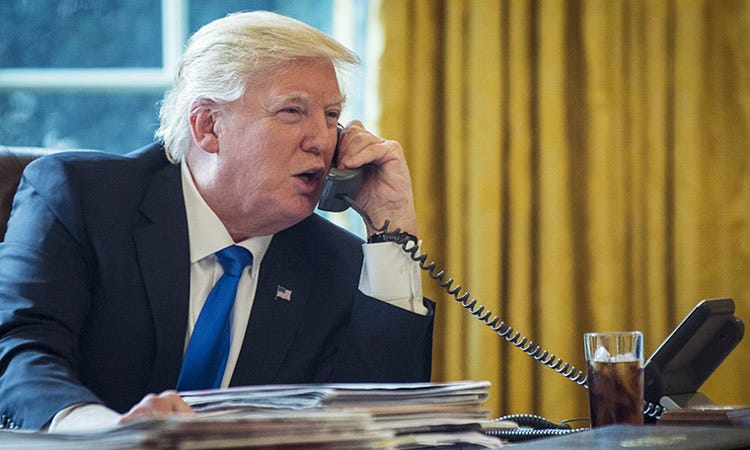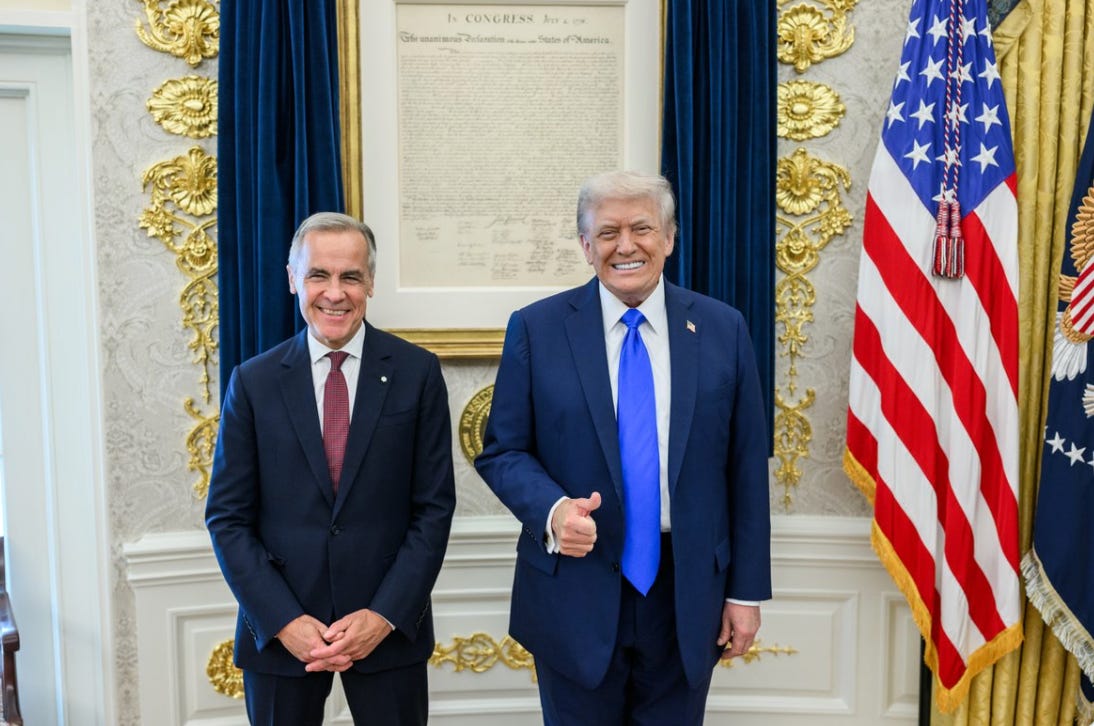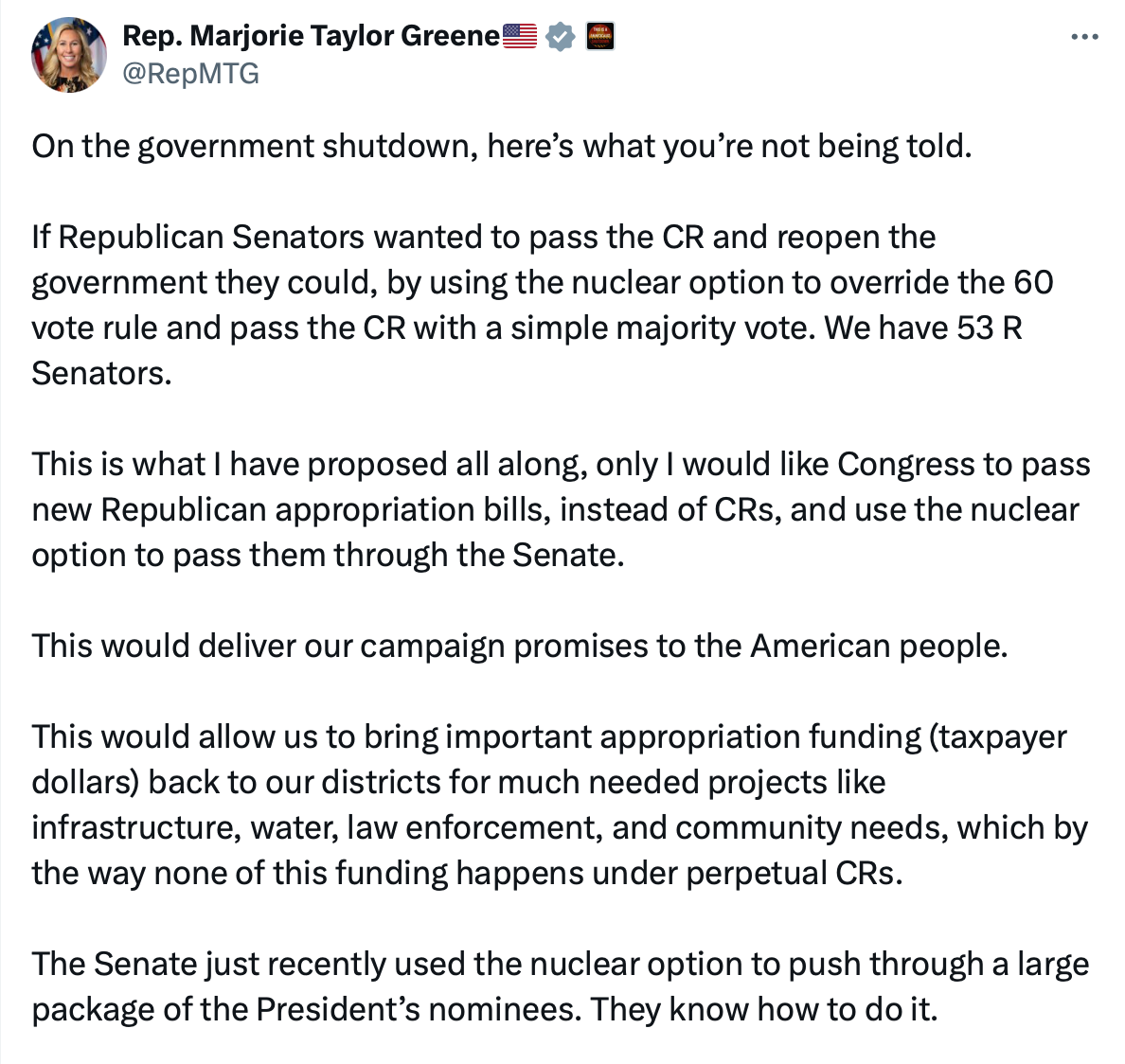Why this government shutdown is different
If Democrats and Republicans don’t find a compromise to end the shutdown, the effects for our country could be more poisonous than we think
The government has been closed since last Tuesday. Wall Street seems to think it’s fine.
Wall Street is wrong.
You might not know there’s a crisis if you checked the stock market, sent your kid to school, or drove on an interstate highway. For now, many government workers are still showing up. And President Trump, even if he technically has no money to spend, is still pushing his priorities. ICE is still making arrests. President Trump is working to deploy National Guard forces to cities nationwide. A judge he appointed is blocking it, but of course he keeps trying.
This is apparently what passes for normal now.
A week ago, I predicted Democrats would eventually pass the continuing resolution, as messed up as it is. (Remember: It gives Congress more money for security while continuing government funding at current levels, which punts the healthcare debate). Now, I’m not so sure.
Both sides seem so dug in that I’m increasingly convinced we’re watching a mutual destruction pact where both parties would rather rule over ashes than compromise.
The Phone Call That Isn’t Happening
President Trump loves a good phone call. He is famous for working the phones. He calls foreign leaders. He calls Fox News hosts. He calls his contacts in business.
He hasn’t picked up the phone to talk to Democrats.
That’s a contrast to 2013, a government shutdown I saw firsthand. During the shutdown, Republicans asked President Obama to call them. He did. (If I look back, I wish he would have called them more often.) They didn’t like what he had to say, but he picked up the phone.
President Trump has found time for a lot of things during the government shutdown, including calls to others and golf. (Which is ironic considering Obama refused to golf during a shutdown, and considering how many times Trump mentioned Obama golfing and swore in 2017 he wouldn’t have time for golf because he’d be too busy governing.) President Trump got a round in over the weekend even as federal government operations remain in limbo.
But call Democratic leaders? Crickets.
When asked what the President was doing to reach out to Democrats, Press Secretary Karoline Leavitt in her Monday briefing said he was in touch with the Republican House Speaker and Senate Majority Leader. Neither is a Democrat. House Minority Leader Hakeem Jeffries challenged Speaker Mike Johnson to a televised debate about the shutdown. Johnson declined on camera. The House remains out of session, despite working during previous government shutdowns, and despite the fact that House members are still being paid.
This isn’t negotiation. This is a choice.
What Breaks First
The assumption seems to be that we can coast on institutional momentum. That air traffic controllers will keep showing up without paychecks. That CDC scientists will monitor disease outbreaks on autopilot while leadership at HHS and FBI is already reportedly in chaos. But I would remind people that there have already been significant cuts to the federal government under DOGE. And many cuts have made departments vulnerable.
How long before something breaks? Air traffic controllers in Burbank are already testing that hypothesis, leaving a prominent airport unstaffed for hours last night. What about a public health outbreak during flu season with a weakened CDC? Contaminated food with FDA staff furloughed? Research labs forced to abandon cancer and Alzheimer’s experiments that take years to restart?
The people orchestrating shutdown priorities seem to think they’re defunding “Democrat-led agencies.” But these aren’t partisan institutions. Many are early warning systems created by both parties. They’re why most Americans never think about whether their food is safe or if their flights are secure.
And here’s the nightmare: If something does break, and the odds increase daily, we won’t unite to fix it. Each side will blame the other. Whatever institutional trust remains will evaporate.
Foreign leaders meet with President Trump and see both his power and our disarray. What does it say about American credibility when the President has time to negotiate with foreign leaders but can’t bother to call his own opposition party? And what does it say to our allies about continuation of any policy this administration sets?
The Problem-Makers Have Taken Over
After California Governor Gavin Newsom spoke Friday, headlines said he told Democrats to stand firm or “lose this country.” That wasn’t the full context. What he actually said matters: Democrats want to compromise. They want a seat at the table.
Trump cancelled a meeting with Democrats to play golf. Newsom was frustrated by the trolling, the Trump 2028 hat on the Resolute Desk, the doctored AI image putting a sombrero on Jeffries. Newsom did say, “You lose leverage, you lose this country.” But Newsom is was also clear: Democrats want to find a way to negotiate.
That’s why Democrats are dug in. This, they feel, is their only leverage given the 60-vote Senate threshold. They think if they cave now, they’ll never get a seat at the table.
Their miscalculation is in assuming the other side wants them at the table at all.
Representative Marjorie Taylor Greene suggested Senate Republicans use the nuclear option, override the 60-vote threshold with a simple majority, and reopen government with only Republican votes. It would shatter Senate precedent. The institution designed to force consensus would become another winner-take-all battlefield.
I think some people want exactly that. They don’t want a functioning government that requires compromise. They want a ruling party take all.
The cruelest irony? Americans actually agree on more than our politicians do. Even Congressional Republicans and Democrats have found common ground on multiple immigration bills that would protect families. None of it gets taken up. Both parties’ leaders seem so focused on making the other side take the fall that they’ve stopped solving problems. It seems they’re manufacturing them instead.
This isn’t gridlock. This is mutual assured destruction, where destroying each other matters more than governing.
How it ends
Here’s my prediction: this ends one of two ways. Either Democrats cave and get nothing immediately (though they have effectively already brought up healthcare cuts, so they could message that as a win). Or Republicans blow up the filibuster and prove they never needed Democrats at all. I honestly hope one of those things happens before anything worse does.
Either way, if that’s how it ends, we don’t go back to normal. We go forward as a country where one party has learned that governing is optional and the other has learned that the out party is optional too.
The markets are underestimating this. Every day this continues, institutional knowledge walks out the door. The government that eventually reopens will be weaker, more hollowed out, less capable of responding to the next crisis. And more apt to ping pong between party priorities.
In that way, it seems this isn’t just a government shutdown. It could be a dress rehearsal for something worse.
***
PROGRAMMING NOTE: I keep hoping that those of us who do want government to work will come together and find ways to force the issue. To that end, there are solutions when it comes to the issue of immigration, bipartisan legislation that sits untouched. Immigration is essential to the economy. Both parties claim they want solutions.
This Thursday, Oct. 8th, I’m speaking with Austin Kocher, a fellow Sub-stacker who studies immigration policy. We’ll talk about what’s happening during this shutdown when it comes to immigration policy and enforcement, and where we go from here. Join us this Thursday at 1 p.m. Pacific / 4 p.m. Eastern. I’ll send the link before the event.






Thank you for this. I honestly think Trump would actually regain some public support if HE caved first and accepted the Democratic recommendation around healthcare funding. But, humility is not a thing in his worldview.